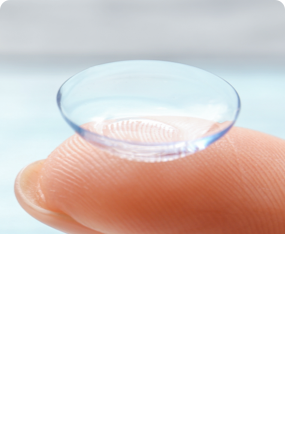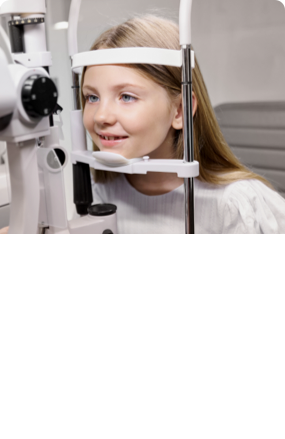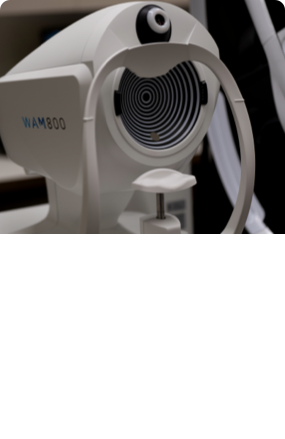The ability to control myopia progression is valuable for your child’s future eye health. Annual children’s eye exams can help your optometrist detect the beginning of myopia development. Nearsightedness is prevalent among children and is an increasing problem that affects about 30% of the population, and this number is growing.
Myopia’s progression can be controlled with specifically designed contact lenses, glasses lenses, and orthokeratology. If your child begins to mention problems seeing in class, can’t play sports, or is squinting at distant objects, a comprehensive eye exam can help get your child started with the best myopia control method for their eyes.
What is Myopia?
Myopia, or nearsightedness, is a standard refractive error that causes blurriness in distance vision, while near vision remains. As light enters your eye, your cornea and lens focus the light to the retina and the optic nerve to transmit the images you see to your brain. In a perfectly shaped eye, the light focuses directly on the retina, producing a clear picture.
In those with myopia, the cornea is too curved, and the eye is too elongated, preventing the light from focusing on the retina and causing blurry vision.
What Is Myopia Control?
Typically, myopia will begin to develop in school-aged children before age 10 and worsen as they grow. Rapid growth of your child’s eyes triggers worsening myopia. While half of those with myopia see stabilization at around age 16, progression will continue in the other half until their early 20s.
Slowing myopia progression isn’t only about keeping your child’s corrective prescription low but supporting their overall eye health. As they enter adulthood, high myopia can increase their risk of severe eye conditions, including:
- Glaucoma
- Retinal detachment
- Myopic macular degeneration
- Cataracts
Myopia Treatment Methods
By beginning myopia control early, you can minimize the adverse effects of myopia in later life. Your child has many options for myopia control treatment methods to suit their age, lifestyle, and preferences.
MiSight Contact Lenses
MiSight contact lenses are daily disposable contact lenses specifically designed for children as young as 8. Your child simply inserts them in the morning and throws them away at night, eliminating the need for sterilization.
Using ActivControl optical technology, these lenses inhibit elongation of the eyes while correcting vision, and they’re proven to slow myopia progression by up to 59% compared to single 1-day contact lenses.
Orthokeratology
Orthokeratology, otherwise known as ortho-k, is an overnight rigid contact lens that corrects vision by gently reshaping the cornea while you sleep. Once the lenses are removed in the morning, your child will notice an immediate improvement in their vision, eliminating the need for glasses. Ortho-k lenses need to be worn nightly to have maximum effect, but the change in focusing power can be dramatic, and it’s proven to reduce myopia progression by up to 56%.
Stellest Lenses
Stellest lenses can fit any eyeglass frames to help correct and control myopia progression. The lens comprises two complementary components: the prescription to sharpen your child’s vision and HALT technology of over 1,000 mini lenses to protect against myopia progression.
The eyeglass lenses reduce myopia progression by an average of 67% when worn for 12 hours a day, compared to single-vision lenses.
Atropine Eye Drops
Low-dose atropine eye drops are a long-standing myopia control method for their effectiveness in slowing myopia progression. Atropine eye drops can be used in children ages 4 to 12.
For kids who prefer the ease of a nightly eye drop, atropine is a trusted option. However, if your child already has some degree of myopia, low-dose atropine won’t correct vision, and they may have to wear corrective lenses to see clearly.
Control Your Child’s Myopia Progression
Myopia is on the rise, but you can help your child have a clear future through myopia control. Controlling myopia early can reduce the potential risk of myopia-related eye conditions, and result in lower prescriptions into adulthood.
If your child is showing signs of myopia, schedule an appointment with Orchard Park Optometry for a children’s eye exam to assess their ocular health and well-being.


















